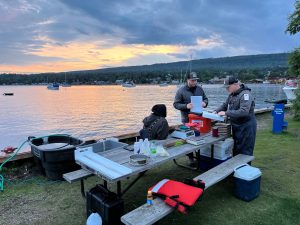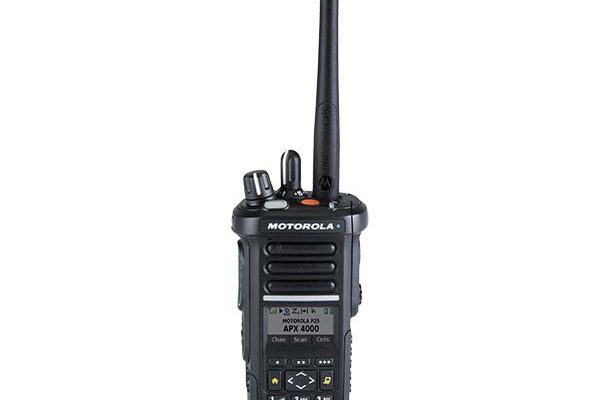The science of using electricity to study Lake Superior fish
On a brisk Monday night in mid-July, a collection of ominous-looking clouds rolls in over the Lake Superior shoreline just as darkness cups the ridgeline above Grand Marais.
A team of fisheries biologists and researchers from the Minnesota Department of Natural Resources are just gearing up for a night on the Big Lake. Their work tonight involves using non-lethal electric currents that will be delivered from a research vessel into the water. The purpose of literally electrocuting fish is to learn more about what various species are eating in Lake Superior near Grand Marais. They also want to track numbers of protected coaster brook trout, a native species to these waters. All of the fish surveyed, including brook trout, steelhead, rainbow trout, burbot, and whitefish, will be released back into Lake Superior.

An electrofishing boat uses a generator to produce electricity. The electricity travels to the poles, called booms, at the front of the boat and into the water. The electric field does not kill fish but temporarily stuns or impairs those that swim within a 2-foot radius from the booms, according to EJ Isaac, the Grand Marais area fisheries supervisor for the DNR.
“This is a non-lethal way to study fish,” he says.
The electric current and its affect on the fish in Lake Superior are typically minimal. If done properly, this sampling technique can be much less damaging than methods that entangle or trap fish, which may injure or even kill them, Isaac says. However effective it might be, it is illegal for anglers to use electricity to fish.
As the researchers do their work on this particular night, the fish are in close to the shoreline. The work is done near the Grand Marais Harbor and about two miles east of town. The loud beeping from the electric system provides a constant melody as the research team moves along the shore. The species of greatest interest to the biologists is coaster brook trout, though steelhead and other trout are also welcomed into the research pool.
After the first round of sampling is done and about 20 fish are netted, Nick Peterson and Nate Beckman from the DNR pump the stomach of a 22-inch steelhead using water to flush the contents. They find all manner of insects and partially-digested fish in the stomach of the silver and green colored fish.
Though the researchers on this particular phase of the project were from the DNR, Isaac says that collaboration on this research with the Grand Portage Band of Lake Superior Chippewa is extremely important.
To learn more about the experience, including an audio report from the harbor and on board the boat where the electrofishing took place, listen to the audio below.















